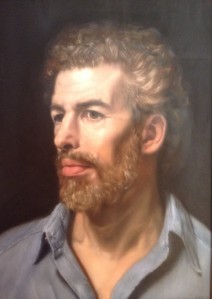In-Sight Publishing
Born to do Math 22 - Associative Coding or Information
Born to do Math 22 - Associative Coding or Information
Scott Douglas Jacobsen & Rick Rosner
March 29, 2017
[Beginning of recorded material]
Rick Rosner: It is something that is as close to codelessness as
you can get or is codeless. By associative, I mean, in philosophy, the thing
that people are always asked to picture is “red.” And how do you know that your
red is the same as anybody else’s red? But the deal with red or any other thing
in your mind is that what you know of it is based purely on association.
There’s no base index to go to. God doesn’t have an index of things.
Where you can go and look
up what “red” is, everything is bootstrapped and built via association. You
think red. You think strawberries. You think apples. In the room I’m in, I’m
looking at bricks and boxes that have parts. I am thinking of wavelengths and
the inner ring of a rainbow. Then I am thinking of the words that come up with
red. It is a giant net of associations that form the idea of red.
You can kind of get the
idea that our thinking is purely associative if you break down the structure by
doing something stupid like taking LSD. You haven’t done that. But I have, when
I was young and stupid. LSD kind of breaks down or hampers the really grainy,
the really small-scale, processing ability of your brain in real-time. And it
makes it harder for your brain to process information.
So you lose some of the
associative information. So if you look at a square grid of floor tiles, say,
you might see this occasionally when you’re not getting enough information
about the spatial relationships. The tiles get swimmy and wavy. And to some
extent don’t maintain the rectangular grid that you’re used to because you’re
not processing information well-enough to have all of the spatial associations
that into forming that grid. LSD takes 19 hours, is a pain-in-the-ass
[Laughing] and is one of the least recreational drugs.
[End of recorded material]
Authors[1]

Rick Rosner
American Television Writer
RickRosner@Hotmail.Com
Rick Rosner

Scott Douglas Jacobsen
Editor-in-Chief, In-Sight Publishing
Scott.D.Jacobsen@Gmail.Com
In-Sight Publishing
Endnotes
[1] Four format points for the session article:- Bold text following “Scott Douglas Jacobsen:” or “Jacobsen:” is Scott Douglas Jacobsen & non-bold text following “Rick Rosner:” or “Rosner:” is Rick Rosner.
- Session article conducted, transcribed, edited, formatted, and published by Scott.
- Footnotes & in-text citations in the interview & references after the interview.
- This session article has been edited for clarity and readability.
- American Psychological Association. (2010). Citation Guide: APA. Retrieved from http://www.lib.sfu.ca/system/files/28281/APA6CitationGuideSFUv3.pdf.
- Humble, A. (n.d.). Guide to Transcribing. Retrieved from http://www.msvu.ca/site/media/msvu/Transcription%20Guide.pdf.
License
In-Sight Publishing and In-Sight: Independent Interview-Based Journal by Scott Douglas Jacobsen is licensed under a Creative Commons Attribution-NonCommercial-NoDerivatives 4.0 International License.
Based on a work at www.in-sightjournal.com and www.rickrosner.org.
Copyright
© Scott Douglas Jacobsen, Rick Rosner, and In-Sight Publishing and In-Sight: Independent Interview-Based Journal 2012-2017. Unauthorized use and/or duplication of this material without express and written permission from this site’s author and/or owner is strictly prohibited. Excerpts and links may be used, provided that full and clear credit is given to Scott Douglas Jacobsen, Rick Rosner, and In-Sight Publishing and In-Sight: Independent Interview-Based Journal with appropriate and specific direction to the original content.
No comments:
Post a Comment